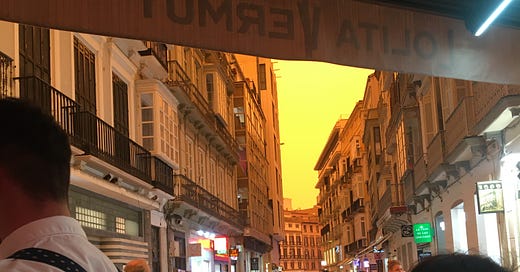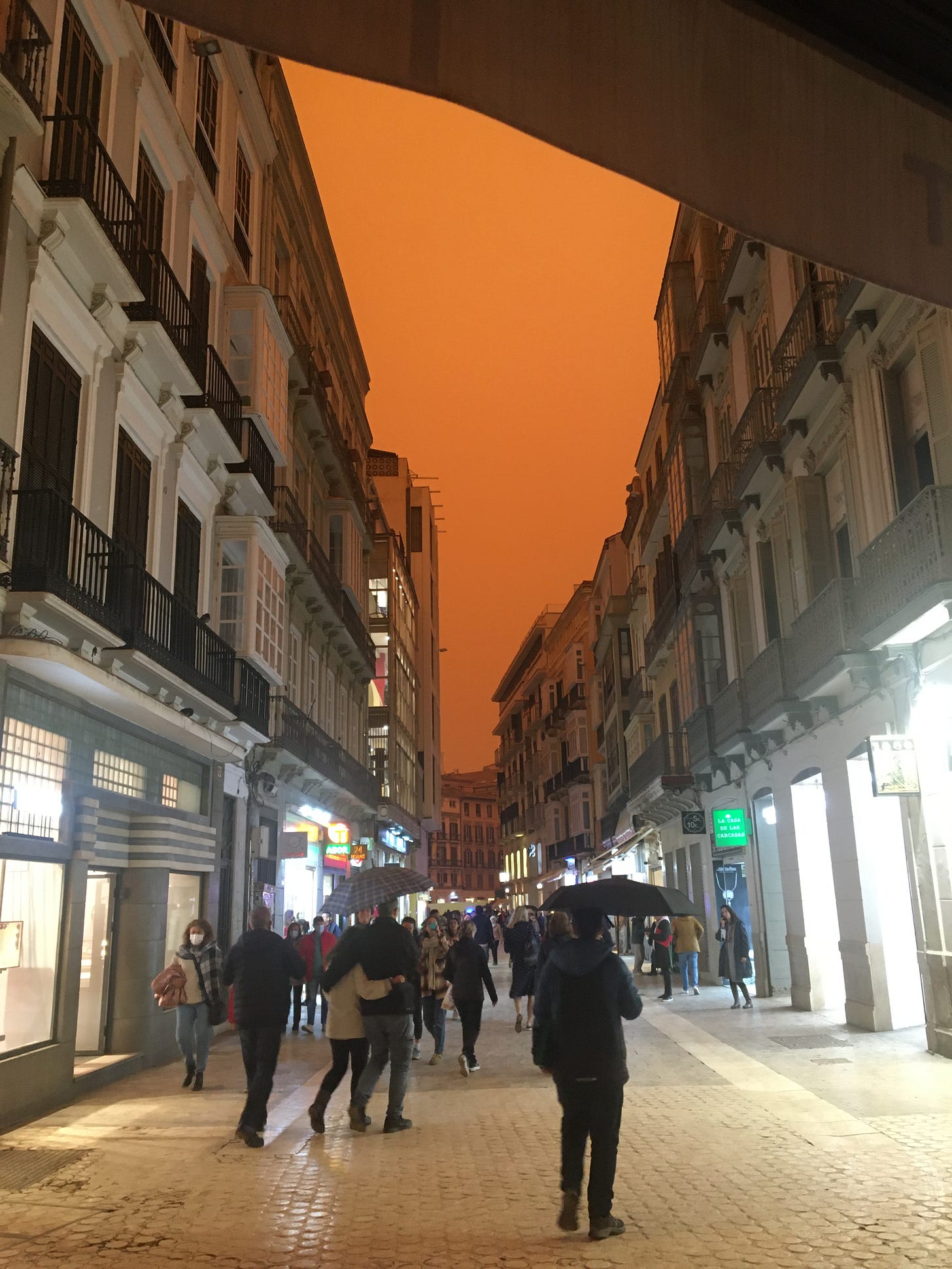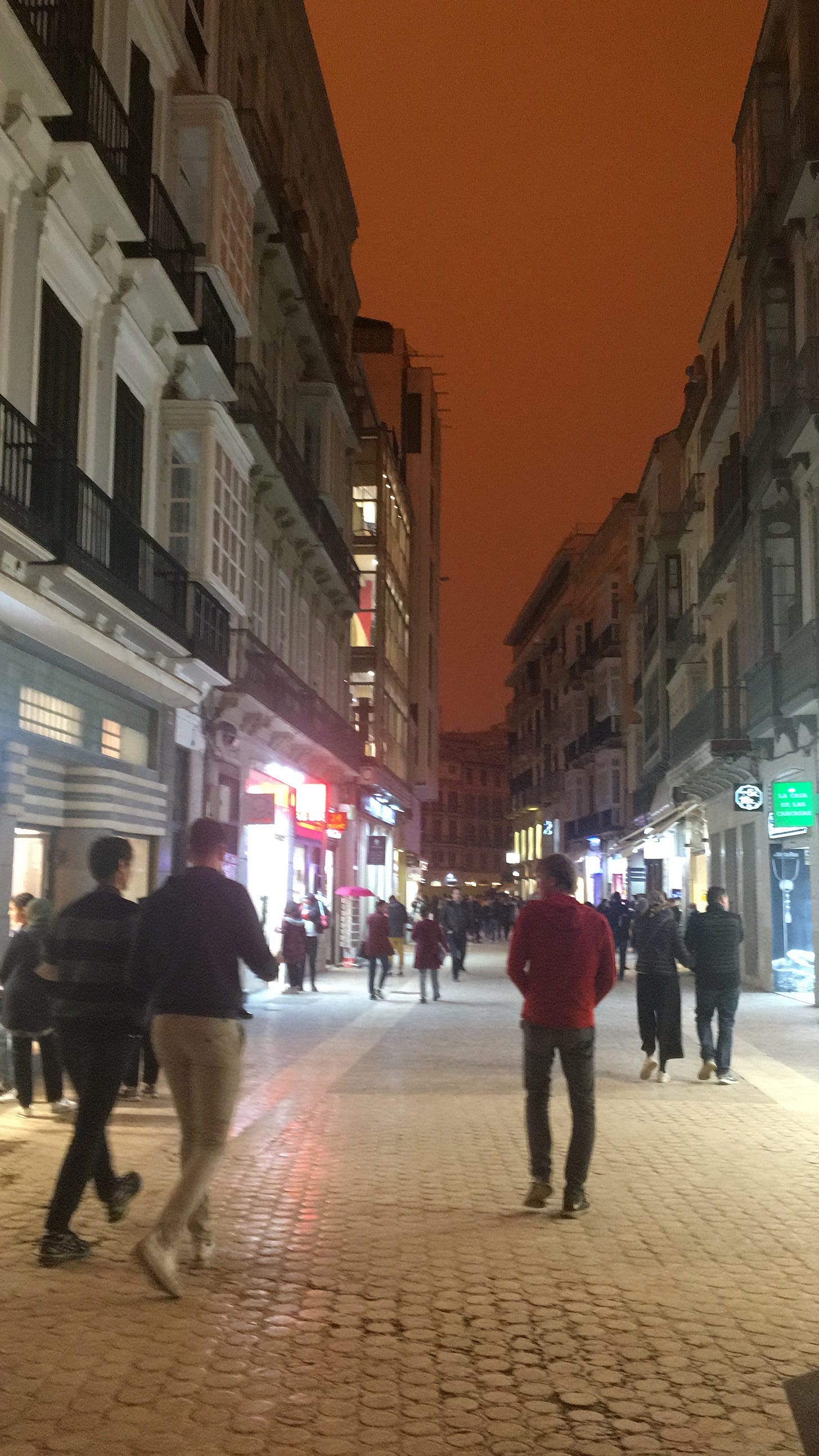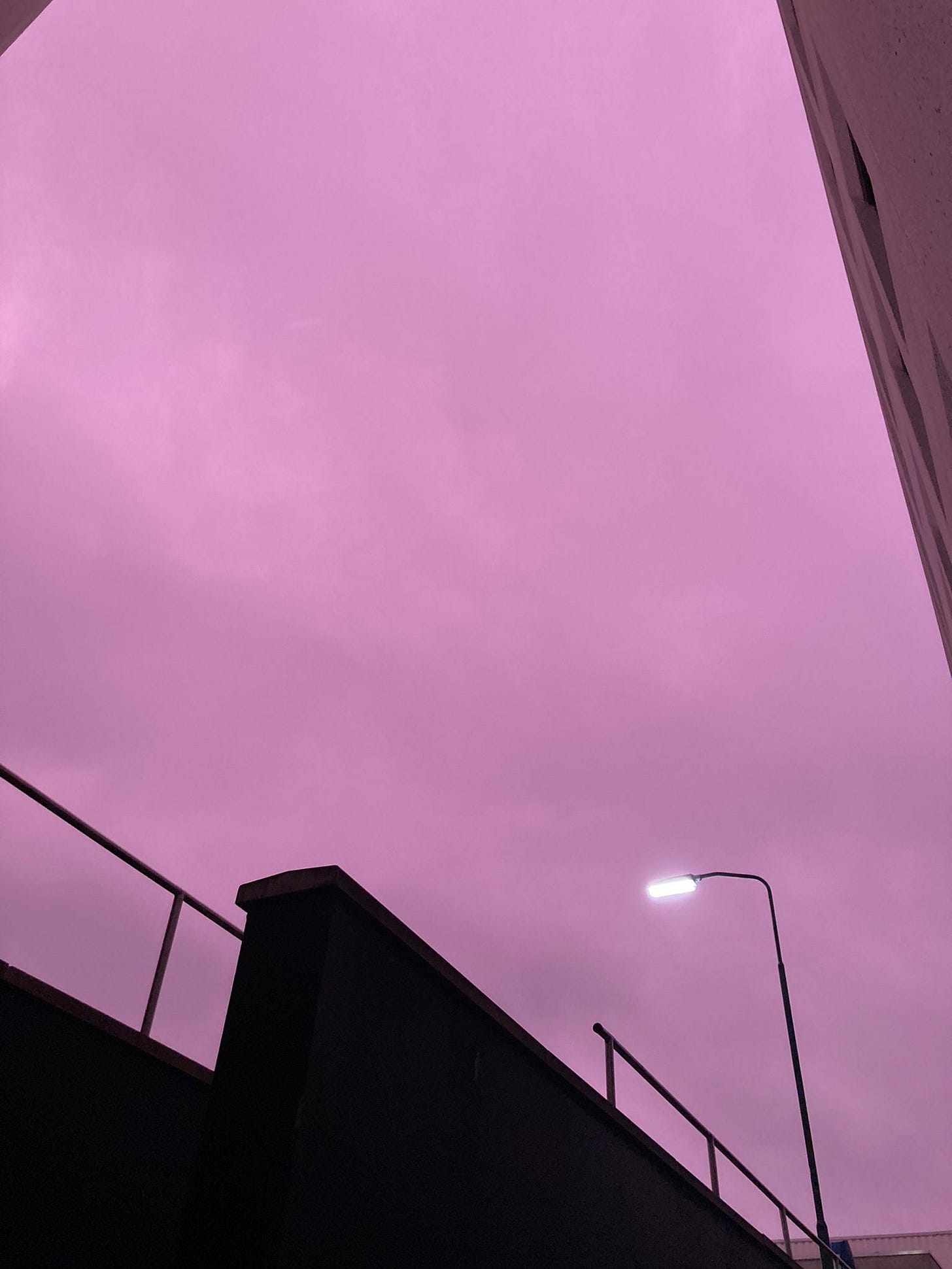A few weeks ago, around the second week of March, a sandstorm swept from the Sahara to the north of Europe. This was an interesting experience, even though it left a bit of a mess on the streets in Spain.
What was it like?
What happened was that fine dust was lifted into the air by wind from the Sahara, and carried into Spain and other European countries north of it. While the dust was in the air, it blocked specific rays of the sun. And the daylight turned a slightly eerie hue that did not fit the normal daylight color, nor the time of day. The light had become an ochre color that lasted into the evening, until the sun had fully set.
In a way, it was remarkable too. Knowing that it would eventually subside, it was an interesting experience to walk around underneath that amber glow, or watch from a terrace as people calmly moved about. There was nothing hysterical about the event, or worrysome.
As soon as the rain started, the fine dust was carried to the ground in the raindroplets. It ended up like a fine layer of mud everywhere, covering the streets, the cars, and people’s jackets. It was almost as if the stuff had a paint-like quality to it, making it hard to remove.
Photos
The author took some pictures, shown in this article. This picture is taken at 16:16 on March 24, 2022, in the historic center of Malaga, Spain. An iPhone 6S was used, with standard photo settings. As you can see, the sky was an ochre yellow. The color of the sky in the photo is the exact same color as the sky was at that time.
As you can see too, the people are non-plussed and go about their business as if not perturbed by the odd sky.
The picture below was taken at the same time, 16:16 toward the other direction in the historic downtown. The shop lights look normal, in stark contrast to the bizar daylight that covers the city:
Now it is 18:33, and it has started to drizzle. The sky is still the same ochre color:
And at 19:05 the sky is still the same color, but darker, because the sun behind the dust layer is going down. Sunset would have been at 7:31 that day.
The picture below was taken in Utrecht, the Netherlands, when the particles had swept in. There is no info about what time it was taken, but because of the streetlight it must have been in the evening
What made this Sahara sand cloud so interesting?
This natural event was so neat, aside from the muck on the cars, because it was not a daily occurrence. Everybody knew it had to do with Sahara dust, and that it would clear up in a few days.
But how would you like it if this was the standard? Would you be able to stand it… never seeing the sun anymore, never seeing a bright blue sky anymore, never seeing normal daylight, never seeing clouds, or even those sad, grey skies anymore. And how would animals like it? And how would plants like it? Do you think that plants could grow with these severely filtered light rays? And you yourself? You have enough problems already with your seasonal affective disorder in the winter. How will you be able to stand a permanent darkening of your world?
Not to mention the oceans… The Earth consists of 75% oceans and seas with their own special processes and life forms. How do you think an artificial change in natural light will affect the realm of the water?
This ochre sky caused by the Sahara dust cloud was a reminder of how important the sun and the natural light spectrum are for the Earth and its inhabitants. If this spectrum were to be changed in any manner, everything falls apart. A human is intricately connected to the natural light rays, just as everything else that comes forth from the Earth is intricately connected to these light rays.
Unfortunately, there are some very bizar individuals on this planet, who have quite egotistically appropriated the right to geoengineer our world, with major destruction as the consequence, as well as insane weather anomalies that are getting worse.









